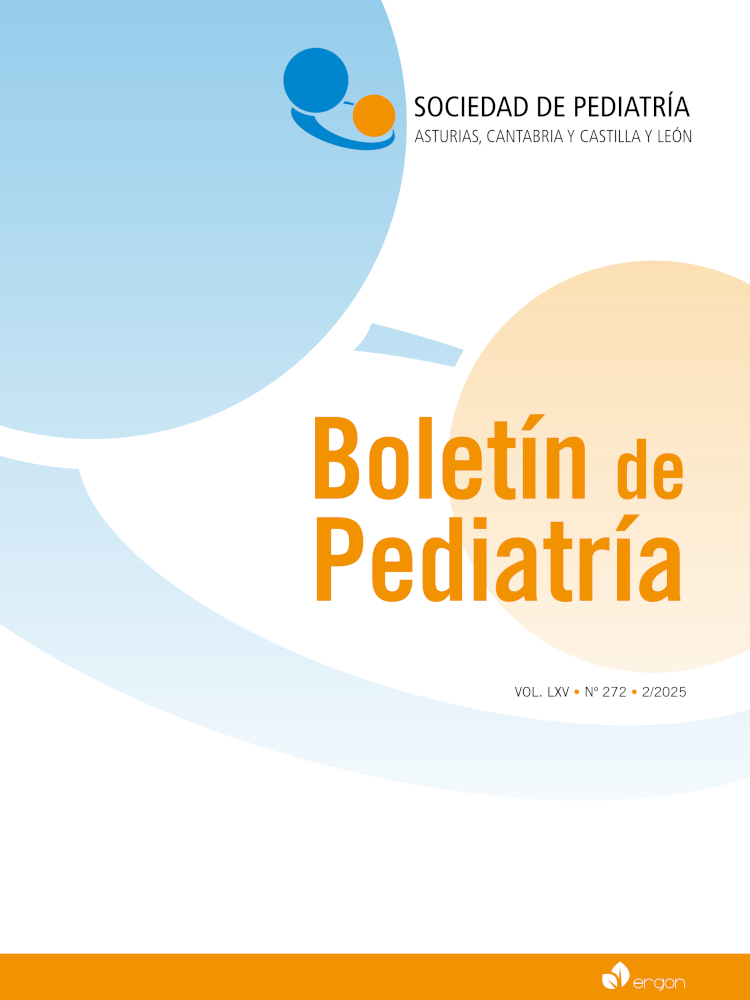Abstract
Introduction. Sexually transmitted infections (STIs) are a major global public health issue and also relevant in pediatric populations.
Development. In children and adolescents, STIs can result from perinatal transmission, sexual abuse, or early sexual activity. Congenital syphilis remains a preventable but concerning condition. Among adolescents, STIs are highly prevalent and frequently asymptomatic, facilitating transmission and delaying diagnosis. Biological and behavioral factors, along with limited healthcare access, increase vulnerability in this group. Nucleic acid amplification tests (NAATs) are essential for accurate diagnosis. Timely, tailored treatment and prevention strategies —such as routine screening, sexual education, vaccination (HBV, HPV), and PrEP/PEP use— are key to controlling these infections.
Conclusions. Healthcare professionals must acknowledge the importance of STIs in pediatric and adolescent populations and be adequately trained to effectively prevent, detect, and manage these infections.
References
World Health Organisation (WHO): Sexually transmitted infections (STIs). [Internet]. Disponible en: https://www.who.int/health-topics/sexually-transmitted-infections#tab=tab_1
World Health Organization. Global progress report on HIV, viral hepatitis and sexually transmitted infections, 2021: accountability for the global health sector strategies 2016-2021: actions for impact: web annex 2: data methods. [Internet]. World Health Organization; 2021. Disponible en: https://iris.who.int/bitstream/handle/10665/342813/9789240030992-eng.pdf.
Programas de cribado. Ministerio de Sanidad [Internet]. Disponible en: https://www.sanidad.gob.es/areas/promocionPrevencion/cribado/cribadoPrenatal/enfermedadesInfecciosas/infoGeneral.htm
McDonald R, O'Callaghan K, Torrone E, Barbee L, Grey J, Jackson D, et al. Missed opportunities for preventing congenital syphilis - United States, 2022. Morb MMWR Morb Mortal Wkly Rep. 2023; 72(46): 1269-74. https://doi.org/10.15585/mmwr.mm7246e1
Unidad de vigilancia de VIH, ITS y hepatitis B y C. Vigilancia epidemiológica de las infecciones de transmisión sexual, 2023. Centro Nacional de Epidemiología, Instituto de Salud Carlos III/ División de Control de VIH, ITS, Hepatitis virales y Tuberculosis, Dirección General de Salud Pública y Equidad en Salud; 2024
Documento de Consenso sobre diagnóstico y tratamiento de las infecciones de transmisión sexual en adultos, niños y adolescentes, SEIMC-GEITS 2024. [Internet]. Disponible en: https://seimc.org/contenidos/documentoscientificos/seimc-dc-2024-Documento-ITS-geits-gesida-gehep.pdf
European Centre for Disease Prevention and Control. STI cases on the rise across Europe [ECDC web site]. March 7, 2024. [Acceso 30 octubre 2024]. Disponible en: https://www.ecdc.europa.eu/en/news-events/sti-cases-rise-across-europe.
Centers for Disease Control and Prevention. National Overview of STIs, 2023 [CDC web site]. November 12, 2024. Disponible en: https://www.cdc.gov/sti-statistics/annual/summary.html
Agwu A. Sexuality, SEXUAL HEALTH, AND SEXUALLY TRANSMITTED INFECTIONS IN ADOLESCENTS AND YOUNG Adults. Top Antivir Med. 2020; 28: 459-62.
Workowski KA, Bachmann LH, Chan PA, Johnston CM, Muzny CA, Park I, et al. Sexually transmitted infections treatment guidelines, 2021. MMWR Recomm Rep. 2021; 70(4): 1-187.
https://doi.org/10.15585/mmwr.rr7004a1
Ashby J, Browne R, Dwyer E et al. BASHH National Guideline on the management of sexually transmitted infections and related conditions in children and young people (2021) [BASHH web site]. 2021. Disponible en: https://www.bashh.org/_userfiles/pages/files/resources/children_and_yp_2021.pdf.
Global health sector strategies on, respectively, HIV, viral hepatitis and sexually transmitted infections for the period 2022- 2030. Geneva: World Health Organization; 2022.
UNESCO, UNAIDS, UNFPA, UNICEF, UN Women & WHO (editors). International technical guidance on sexuality education [WHO web site]. March 14, 2018. Disponible en: https://www.who.int/publications/m/item/9789231002595.
WHO Implementation tool for pre-exposure prophylaxis (PrEP) of HIV infection. Module 12: Adolescents and young adults. Geneva: World Health Organization; 2018.
Bachmann LH, Barbee LA, Chan P, Reno H, Workowski KA, Hoover K, et al. CDC Clinical Guidelines on the use of doxycycline postexposure prophylaxis for bacterial sexually transmitted infection prevention, United States, 2024. MMWR Recomm Rep. 2024; 73(2): 1-8. https://doi.org/10.15585/mmwr.rr7302a1

This work is licensed under a Creative Commons Attribution-NonCommercial 4.0 International License.
Copyright (c) 2025 Boletín de Pediatría
